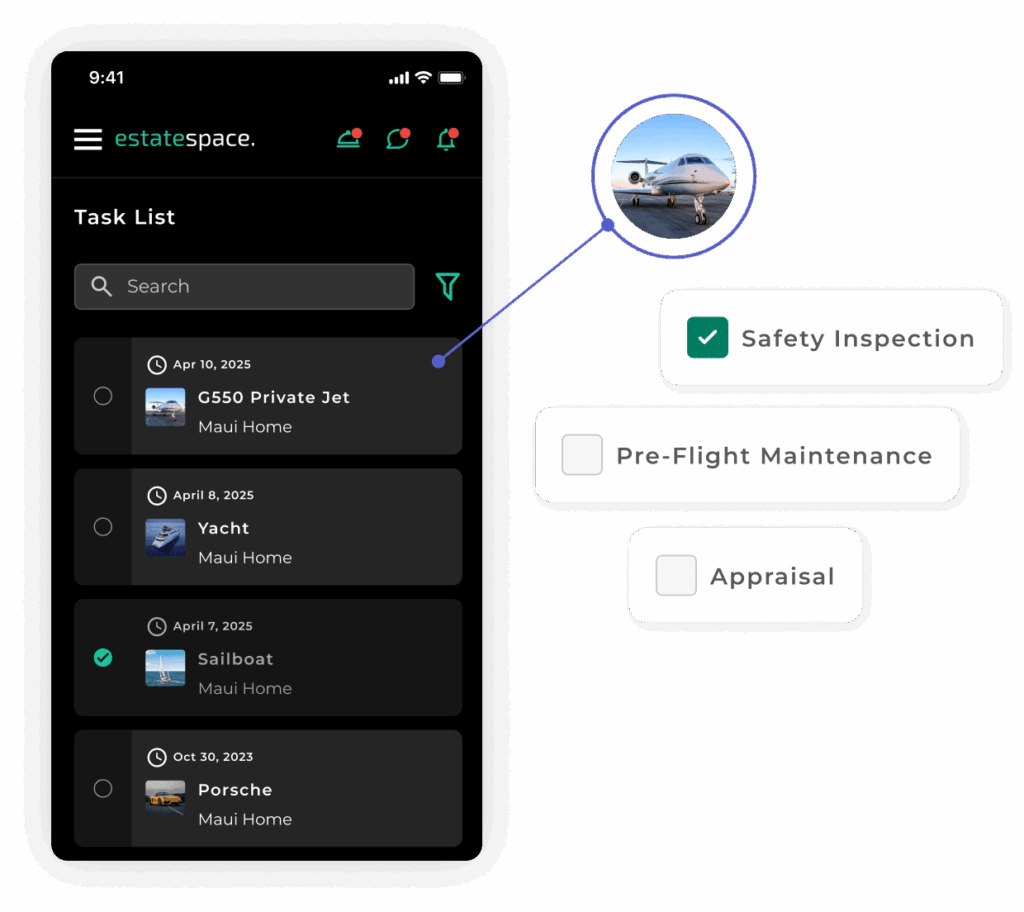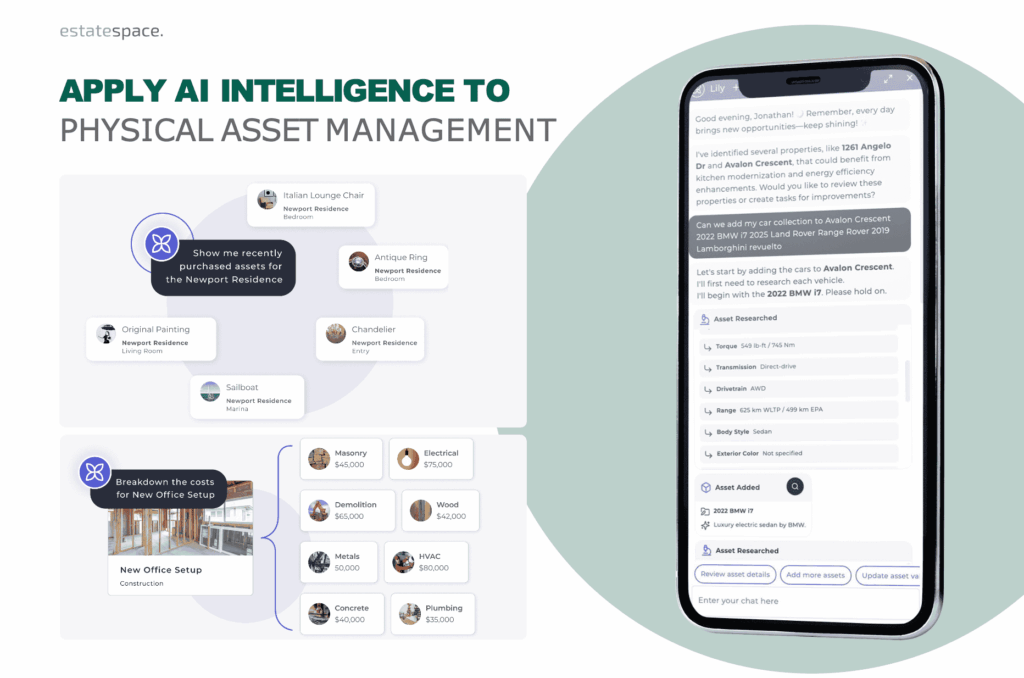Team Tasks Management: Why Departmental Silos Cost You Efficiency and Revenue
Effective team tasks management becomes a strategic imperative when coordinating work across specialized departments managing high-value assets and properties. Yet information gets lost between property maintenance teams and client service representatives. Project deadlines slip when vendor coordination fails. Documentation exists in multiple locations, creating confusion about current versions. Meanwhile, staff assignments become unclear when multiple projects intersect, and client requests fall through the cracks.
These challenges compound exponentially when managing luxury properties, diverse asset portfolios, or complex construction projects where precision and white-glove service are non-negotiable expectations.
The Hidden Complexities of Team Tasks Management Across Departments
Managing tasks across different departments creates friction points that silently erode efficiency and create bottlenecks. Consider these common scenarios that repeat daily:
Information Loss Between Teams The property maintenance team completes HVAC service, but the client service representative doesn’t know to update the owner. Consequently, the client calls asking about scheduled maintenance, revealing internal coordination gaps.
Project Deadline Slippage Vendor coordination fails because the project manager assumed the facilities team had confirmed availability. As a result, construction delays cascade through the timeline, affecting multiple stakeholders.
Documentation Confusion Three versions of the same maintenance checklist exist across different systems. Therefore, teams follow outdated procedures, creating inconsistent service quality.
Assignment Ambiguity Multiple projects intersect at the same property, leaving staff unclear about priorities. Subsequently, important tasks get delayed while less critical work proceeds.
Request Abandonment Client requests transition between service teams without proper handoff documentation. Eventually, these fall through cracks entirely, damaging client relationships.
Research confirms that fragmented systems and manual processes create inherent risks including missed requirements and inadequate documentation—problems that compound over time across departments. Four Family Office Trends to Watch in 2025
Why Traditional Team Tasks Management Approaches Fall Short
Unfortunately, many organizations attempt to solve these problems with a patchwork of solutions that create new challenges.
The Multi-Tool Trap
Using separate systems for different teams creates data silos that require constant manual synchronization. For example, property management software doesn’t communicate with client relationship platforms. Meanwhile, project management tools operate independently from both. As a result, team members spend hours copying information between systems instead of delivering strategic value.
The Communication Breakdown
Email chains, messaging apps, and spreadsheets quickly become overwhelming when tracking complex task dependencies across teams. Specifically, critical context gets buried in lengthy threads that new team members can’t parse. Moreover, when someone goes on vacation or leaves, their email archive becomes an inaccessible knowledge repository.
The Visibility Problem
Without a unified system, leadership lacks real-time insight into team capacity, priorities, and bottlenecks. Consequently, resource allocation becomes reactive rather than strategic. Furthermore, executives can’t identify patterns that indicate systemic issues versus isolated incidents.
Building a Framework for Cross-Team Task Excellence
Fortunately, achieving true excellence in team tasks management requires a systematic approach that addresses root causes.
1. Centralize Task Infrastructure
First and foremost, the foundation of effective team tasks management begins with consolidation. A single source of truth for all task-related information ensures everyone works from the same data. This means:
- Unified task repository accessible to all stakeholders
- Standardized task creation and assignment protocols
- Consistent documentation practices across teams
- Integrated calendar and deadline management
As a result, teams stop wasting time hunting for information or reconciling conflicting data sources.
2. Design Clear Workflows Across Boundaries
Next, tasks rarely stay within departmental lines. Therefore, effective cross-team processes must:
Define Handoff Protocols Clear procedures for transferring work between departments. For instance, when maintenance identifies an issue requiring capital investment, the handoff to project management follows documented steps.
Establish Responsibility Matrices RACI frameworks (Responsible, Accountable, Consulted, Informed) that eliminate ambiguity about ownership. Consequently, every task has clear accountability.
Create Conditional Workflows Adaptive processes that respond to different scenarios automatically. For example, emergency repairs follow different approval paths than scheduled maintenance.
Include Approval Hierarchies Workflows that respect organizational structure while maintaining efficiency. Thus, appropriate oversight occurs without creating bottlenecks.
3. Enable Contextual Team Tasks Management
Moreover, tasks don’t exist in isolation—they carry context that makes them meaningful. Superior team tasks management platforms provide:
Document Attachment Capabilities Files linked directly to relevant tasks, eliminating the “where did we save that?” problem. Subsequently, team members access critical information instantly.
Contextual Comment Threads Discussions preserved where they’re relevant rather than scattered across email. Therefore, future team members inherit complete context.
Relationship Mapping Connections between tasks, properties, assets, and client relationships. As a result, teams understand how individual tasks fit into broader property management objectives.
Historical Records Institutional knowledge that survives staff transitions. Consequently, organizations stop relearning the same lessons repeatedly.
4. Implement Adaptive Reporting
Finally, different stakeholders need different views of the same task ecosystem:
Executive Dashboards High-level progress and bottleneck identification. Thus, leadership makes informed strategic decisions.
Team Lead Views Resource allocation and deadline management. Consequently, managers optimize team capacity.
Individual Contributor Interfaces Daily priorities and actionable next steps. Therefore, staff focus on highest-impact work.
Client-Facing Portals Service delivery status and communication channels. As a result, clients maintain visibility without overwhelming internal teams.
The AI Revolution in Team Tasks Management
Importantly, artificial intelligence is transforming how organizations approach task coordination across teams. Next-generation platforms now offer:
Automated Task Creation Tasks generate automatically based on recurring needs or triggers. For example, when a maintenance inspection identifies issues, follow-up tasks create themselves with appropriate assignments.
Intelligent Assignment Recommendations AI analyzes team member availability, expertise, and current workload. Consequently, tasks route to optimal resources rather than defaulting to whoever handled them last time.
Predictive Analytics Systems identify potential delays before they occur. Therefore, teams take corrective action proactively rather than reactively managing crises.
Natural Language Processing Email and message content converts into structured tasks automatically. As a result, nothing falls through cracks because it remained buried in communication threads.
How EstateSpace Elevates Team Tasks Management
Notably, EstateSpace’s platform was designed specifically to address the complex team tasks management challenges faced by organizations managing high-value assets, properties, and client relationships.
The AI-powered platform brings together property management, asset oversight, project coordination, and client service into a seamless ecosystem where:
Automated Task Generation Tasks create automatically based on maintenance schedules, client preferences, and project milestones. Thus, nothing requires manual tracking.
AI-Powered Standardization AI assistant Lily helps teams create detailed SOPs that standardize recurring processes. Consequently, quality remains consistent regardless of which team member executes work.
Integrated Documentation Document management connects directly with task workflows. Therefore, relevant files are always accessible where needed.
Unified Communication Client communications link directly to relevant tasks and assets. As a result, context remains preserved across interactions.
Synchronized Vendor Management Vendor coordination synchronizes with project timelines automatically. Consequently, scheduling conflicts get prevented rather than resolved.
Connected Expense Tracking Costs connect directly to related tasks for accurate budget management. Subsequently, financial visibility improves dramatically.
This integrated approach eliminates the silos that traditionally separate property teams, asset managers, project managers, and client service representatives—creating a unified team tasks management environment where nothing falls through the cracks.
The Competitive Advantage of Team Tasks Management Excellence
Ultimately, organizations that master cross-team task coordination gain significant advantages:
Higher Client Satisfaction Consistent, reliable service delivery builds trust and loyalty. In fact, clients notice when teams coordinate seamlessly versus operating in silos.
Reduced Operational Costs Eliminating redundant work saves 20-30% on administrative overhead. Moreover, preventing issues costs far less than fixing them.
Improved Staff Retention Clearer expectations and reduced frustration keep talented team members engaged. Consequently, organizations retain institutional knowledge and avoid costly turnover.
Better Vendor Relationships Organized, predictable engagement makes you a preferred client. Therefore, vendors prioritize your needs and offer better pricing.
Enhanced Scalability Operations expand without proportional increases in management overhead. As a result, growth becomes profitable rather than consuming margins.
For example, one asset management firm coordinating work across three departments implemented centralized team tasks management and reduced coordination time by 45% while simultaneously improving client satisfaction scores by 28%.
Measuring Success in Cross-Team Coordination
Additionally, the benefits of effective team tasks management show up in concrete metrics:
- 40-50% reduction in time spent on task coordination
- 60% fewer tasks falling through cracks between departments
- 35% faster project completion through better handoffs
- 25% improvement in resource utilization and capacity planning
- Complete visibility into cross-departmental workflows and bottlenecks
Implementation Strategy
To begin, transitioning to excellence in team tasks management requires a phased approach:
- First, audit current state: Document how tasks currently flow between departments
- Then, identify friction points: Where do handoffs fail or information get lost?
- Next, standardize workflows: Create documented procedures for cross-team coordination
- After that, implement technology: Choose platforms designed for multi-department complexity
- Finally, measure and refine: Track metrics and continuously improve based on data
Transform Task Management Into Strategic Advantage
In conclusion, in an environment where client expectations continue to rise and operational margins face constant pressure, sophisticated team tasks management isn’t just an operational improvement—it’s a strategic necessity for continued success.
By bringing together people, processes, and technology in a thoughtfully designed system, organizations can transform task management from a daily challenge into a sustainable competitive advantage.
Ready to eliminate silos and coordinate seamlessly across departments? The transition begins with understanding your current challenges and opportunities.
Schedule a consultation on cross-team coordination solutions →
Alternatively, explore how purpose-built estate management technology unifies property teams, asset managers, project coordinators, and client service into one integrated system.
Related Resources:






